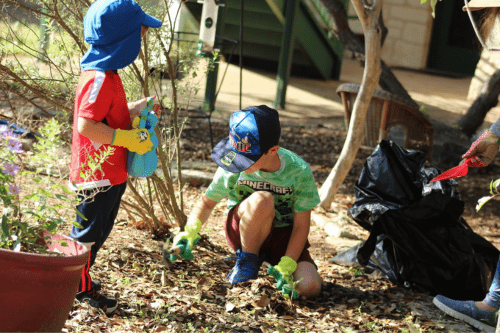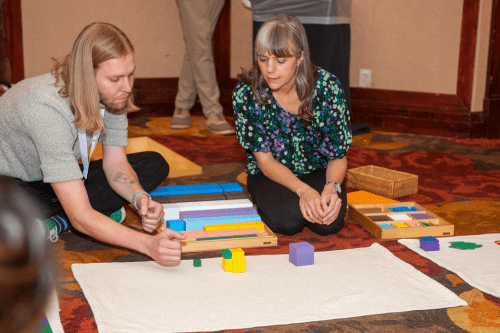5 Tips for Fostering Physical and Emotional Digital Wellbeing

We have more information at our fingertips than ever before. Ask Google anything, and you’ll probably find an answer. We already know that access to social media, gaming, and Google is both terrifying and amazing. So how do we consciously move the gauge from less terrifying to more amazing? Browse these 5 tips for fostering physical and emotional digital wellbeing with adolescents.
Model Healthy Phone Boundaries
Quite simply, children are incredibly in-tune mirrors. They observe what we do, how we respond vs. react, and they form their own habits accordingly. When I was in my family unit, I noticed the girls on their devices more when my partner and I were also using our devices more. I distinctly remember a few Sundays after breakfast that I looked up from my screen to see the whole family also sunken into their chairs and faces into their phones. Why? Because the two adults in the room were using maladaptive coping mechanisms like screen time as an escape instead of finding healthy ways to pause.

So what do I do about it? I force myself to put the phone down. I do a breathing exercise to figure out what I need at the moment, and then I try to tend to my needs as much as possible.
Some healthy phone boundaries can include:
- Charging your phone anywhere but the bedroom (you might have to get an actual alarm clock)
- Practicing mindfulness before checking your phone in the morning
- Saying something out loud when you notice you’ve been stuck in the scrolling void
- Selecting a different activity that meets the needs you’re trying to fill with screen time
- Setting a time limit for your own screen time
- Put the phones and devices away an hour before bed
Use App Timers (or App Limits)
Most smartphones come with built-in digital wellbeing settings, the app timer being my absolute favorite. I can’t tell you how to find this feature on your specific phone, but I can tell you how I purposefully use mine.
Each morning I start with 30 minutes of Instagram (my main vice) to use during work pauses or downtime. When the app timer runs out by mid-morning, I will only give myself more time if I’ve done everything that makes me feel good at the end of the day—moving my body, finishing my to-do list, visiting a new part of town, mindful breathing, cooking, etc. Am I perfect each day? Absolutely not. Does it feel itchy when all I want to do is check social media? Sometimes. Does my screentime decrease when I create time boundaries? Without a doubt. Do I feel more aligned and in-tune with myself when I limit my app time? Totally.
Follow Accounts That Are Good For Mental and Physical Wellbeing
For Adults:
- Dr. Siggie: “Helping parents feel more empowered and less guilty. Practical tips: toddlers to teens. Step-by-step scripts.”
- Sex Positive Families, LLC: “Helping families raise sexually healthy children at every stage” (Aside: This is KEY when discussing digital wellbeing for adolescents. Think about what they have access to online… yup.)
- The.Holistic.Psychologist, Dr. Nicole LePera: “I teach you to heal + consciously create a new version of yourself.”
For Adolescents:
- Amy Poehler’s Smart Girls: “Best friends Amy Poehler & Meredith Walker created Smart Girls to celebrate your truest self. Why? Because you change the world by being yourself!”
- Coaching With Will (more popular on TikTok): “I help students find direction and develop unshakable confidence.”
- Some Good News: “Your source for good news stories from around the world.”
Have Explicit, Non-Judgemental Conversations About Screens

When non-judgemental, observational conversations are regular practice, it shows adolescents that they are safe to come to you because you are open with them. The internet is a vast space, and children of any age can stumble onto something that is graphic and not age-appropriate. Videos, pictures, and gossip can spread like wildfire on social media. Games, scrolling, and talking well into the night can develop maladaptive coping mechanisms. If and when these situations occur, your adolescent should feel comfortable coming to you with questions, conversations, or concerns. On the other hand, these conversations can be spaces to share excellent discoveries, insights, or ideas that came from technology.
Navigate With Care
Smartphones aren’t going anywhere, and honestly, I don’t think that they should. Technology is a wonderful tool, and we simply need to form healthy boundaries around it. Get in touch with your own technology use, follow and have your children follow wellbeing experts, set timers, and foster meaningful discussions around the benefits and consequences of technology.
About the Author
 |
Kat St.Pierre (she/her) is a former 8th grade English teacher turned freelance content/copywriter. Passionate about being kind to others, the planet, and herself, she loves using her voice to amplify important conversations and educate with empathy. Contact her at copykatstpierre@gmail.com. |
Interested in writing a guest post for our blog? Let us know!
The opinions expressed in Montessori Life are those of the authors and do not necessarily represent the position of AMS.


















